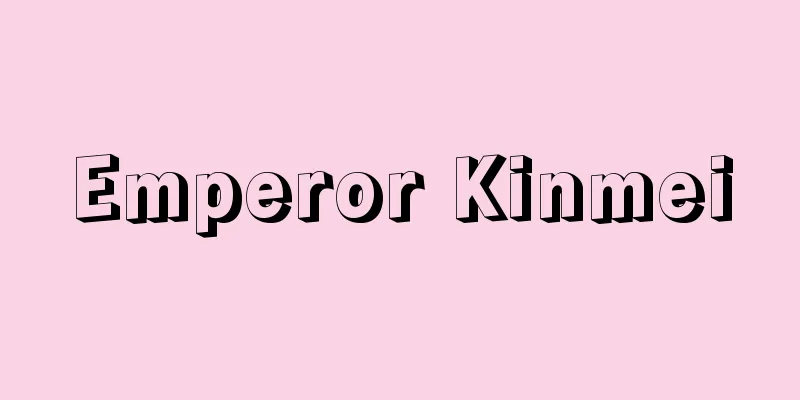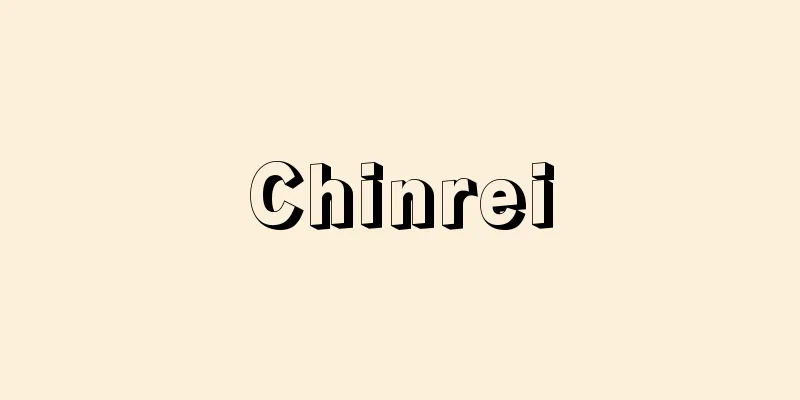Insulating materials

|
A general term for materials used to insulate electricity and prevent current from flowing in circuits other than those that need it, or to prevent electricity from being supplied to parts other than those that need it. In the past, natural materials such as air, cotton thread, sulfur, paraffin, and glass were used, but synthetic resin-based materials are now widely used. These synthetic resin-based materials, such as polyvinyl chloride, synthetic rubber, polyethylene, polyester, epoxy, and silicone, have significantly better electrical insulation, heat resistance, and mechanical properties than natural materials, and have contributed greatly to the advancement of equipment, such as the need for higher voltages and larger capacities in heavy electrical equipment and the need for smaller and lighter electronics. The main insulating materials can be classified based on their properties and composition as follows: (1) Gas insulating materials In addition to air, there are nitrogen, carbon dioxide, sulfur hexafluoride, etc., which are often used under pressure. Sulfur hexafluoride, synthesized from fluorine gas and sulfur, is an inert, non-flammable gas with excellent dielectric strength, and has been used in gas-insulated transformers and gas-insulated circuit breakers. However, its use has come to be restricted because it is considered to have a high global warming potential. (2) Liquid insulating materials: There are vegetable oil, mineral oil, and synthetic insulating oil, and vegetable oils such as drying oil are used as the raw material for insulating oil, while mineral oil and synthetic insulating oil are used for insulation and cooling of oil-filled electrical equipment such as transformers, capacitors, cables, etc. Since around 2000, vegetable oil has been reconsidered as being more environmentally friendly. (3) Inorganic solid insulating materials For electrical and power applications, there are mica, porcelain (ceramics), glass, etc. Mica is a natural crystal with excellent insulating and heat-resistant properties. White mica and gold mica are processed into mica products such as plates, sheets, and tapes, and are widely used for coils and other insulation. Porcelain is made by molding mineral powder and firing it at high temperatures, and there are feldspar porcelain used for insulators and porcelain tubes, steatite porcelain and alumina porcelain used for high-frequency insulators and semiconductor packages, etc. Glass is hard and brittle, but is transparent and has good heat resistance and insulating properties. Soda-lime glass, lead glass, borosilicate glass, silica glass (quartz glass), etc. are used for light bulbs and cathode ray tubes. Glass fiber, which is made by stretching molten glass into thin fibers, is used for varnished glass cloth, base material for laminated boards, and coating of electric wires, etc. In addition, inorganic solid insulators such as silicon dioxide (SiO 2 ) (silica) are used for internal insulation of semiconductor elements. (4) Organic Fiber Materials Paper, cotton thread, silk, and synthetic fibers such as polyester and polyamide (nylon) are used for insulation. Paper has long been used as an insulator for transformers, cables, and capacitors by impregnating it with insulating oil. (5) Resin-based materials Natural resins such as shellac and rosin have long been used as raw materials for insulating paints. Synthetic resin-based materials include thermoplastic resins such as polyethylene, polyvinyl chloride, polystyrene, and polyester, and thermosetting resins such as phenolic resin, melamine resin, epoxy resin, and silicone resin. Synthetic resins are used for equipment insulation in a variety of forms, such as wire coating materials, molded products, laminated products, and insulating paints, and there are many examples of this. (6) Rubber materials: Natural rubber, butyl rubber, ethylene propylene rubber, silicone rubber, etc. are used for wire coating, moldings, etc. (7) Paint-based materials Insulating paints such as coil varnish and enamel varnish, which are made by dissolving natural or synthetic resins in a solvent, are widely used as insulating and insulating treatment materials. [Shin Kubota and Yoshimichi Oki] [Reference items] | | |Source: Shogakukan Encyclopedia Nipponica About Encyclopedia Nipponica Information | Legend |
|
電気を絶縁して、必要とする回路以外に電流が流れるのを防ぐために用いる、あるいは必要とする部位以外に電気が供給されるのを防ぐために用いる材料の総称。古くは空気、綿糸、硫黄(いおう)、パラフィン、ガラスなどの天然物が用いられていたが、現在では合成樹脂系材料が広く用いられている。これら合成樹脂系材料、たとえばポリ塩化ビニル、合成ゴム、ポリエチレン、ポリエステル、エポキシ、シリコーンなどの樹脂は、天然材料と比べ、電気絶縁性、耐熱性、機械的特性が著しく優れ、重電関係の高電圧・大容量化、またエレクトロニクス関係の小型・軽量化など、機器の進歩に大きく貢献している。おもな絶縁材料を性状、組成から分類すると次のようになる。 (1)気体絶縁材料 空気のほかに、窒素、炭酸ガス、六フッ化硫黄などがあり、しばしば加圧して用いられる。フッ素ガスと硫黄から合成される六フッ化硫黄は、絶縁耐力に優れた不活性、不燃性の気体で、ガス絶縁変圧器やガス絶縁遮断器などに用いられてきた。しかし、地球温暖化係数が高いとされ、その使用が抑制されるようになった。 (2)液体絶縁材料 植物性油、鉱油、合成絶縁油があり、乾性油などの植物性油が絶縁油の原料として使用され、鉱油および合成絶縁油は変圧器、コンデンサー、ケーブルなどの油入(あぶらいり)電気機器の絶縁、冷却に用いられる。2000年ごろから、植物性油が環境に優しいとして見直されつつある。 (3)無機固体絶縁材料 電気・電力用途としては、マイカ(雲母(うんも))、磁器(セラミックス)、ガラスなどがある。マイカは絶縁性、耐熱性が非常によい天然産の結晶で、白マイカや金マイカが、板、シート、テープなどのマイカ製品に加工され、コイル、その他の絶縁に広く用いられている。磁器は鉱物質粉末を成形して高温で焼成したもので、碍子(がいし)、碍管に用いられる長石磁器や、高周波用絶縁物、半導体用パッケージなどに用いられるステアタイト磁器、アルミナ磁器などがある。ガラスは硬くもろいが、透明で耐熱性、絶縁性がよい材料で、ソーダ石灰ガラス、鉛ガラス、ホウケイ酸ガラス、シリカガラス(石英ガラス)などが電球、ブラウン管などに用いられる。溶融ガラスを引き伸ばし、細い繊維にしたガラス繊維は、ワニスガラスクロス、積層板の基材、電線の被覆などに用いられている。なお、半導体素子の内部の絶縁には二酸化ケイ素SiO2(シリカ)などの無機固体絶縁体が用いられている。 (4)有機繊維質材料 紙、綿糸、絹およびポリエステル、ポリアミド(ナイロン)などの合成繊維が絶縁に利用されている。紙は古くから絶縁油などに含浸させて、変圧器、ケーブル、コンデンサーの絶縁に使用されている。 (5)樹脂系材料 セラック、ロジンなどの天然樹脂が古くから絶縁塗料の原料として用いられている。合成樹脂系材料には、ポリエチレン、ポリ塩化ビニル、ポリスチレン、ポリエステルなどの熱可塑性樹脂と、フェノール樹脂、メラミン樹脂、エポキシ樹脂、シリコーン樹脂などの熱硬化性樹脂とがある。合成樹脂は電線被覆材、成形品、積層品、絶縁塗料など種々の形で機器絶縁に用いられ、その例はきわめて多い。 (6)ゴム系材料 天然ゴム、ブチルゴム、エチレンプロピレンゴム、シリコーンゴムなどが電線被覆、成形品などとして用いられる。 (7)塗料系材料 天然樹脂または合成樹脂などを溶剤に溶かしてつくったコイルワニス、エナメルワニスなどの絶縁塗料が、絶縁および絶縁処理材として広く用いられている。 [久保田慎・大木義路] [参照項目] | | |出典 小学館 日本大百科全書(ニッポニカ)日本大百科全書(ニッポニカ)について 情報 | 凡例 |
<<: Insulation paint - Zetsuentoryou (English spelling) coating for insulation
>>: Coordination of insulation
Recommend
decoration
… [Patterns as decoration] The objects that are d...
Discretionary disposition by administrative agencies
...The law, therefore, responds to the demand to ...
Kitaura (Fukuoka) - Kitaura
…The plateau also contained the Nokonoshima Cow R...
Ladybug beetle - Ladybug beetle
A general term for insects belonging to the famil...
Elevator - elevator (English spelling)
An elevator that moves a cage carrying people or ...
Santa Isabel Island
A volcanic island in the southwest Pacific Ocean, ...
Freer Gallery of Art (English)
...With the backing of America's powerful eco...
Agricultural Improvement and Extension System - nougyoukairyofukyuseido
The Agricultural Improvement Promotion Law (promul...
Spider of the genus
…The genus Chara is monoecious, with two reproduc...
Mount Hanamagari
This mountain is located on the border between Ka...
Kamogawa [town] - Kamogawa
An old town in Mitsu District, central Okayama Pre...
Johannes von Tepl
1350?-1414 A Bohemian (Czech) author of the late M...
Calmness - Calmness
...The first is "supply" which means th...
Foundation bolt - Kiso bolt (English spelling) foundation bolt
Also called foundation bolts or topography bolts. ...
Alpine glacier - Arupusugatahyoga
…Hanging glaciers are small glaciers that cling t...









